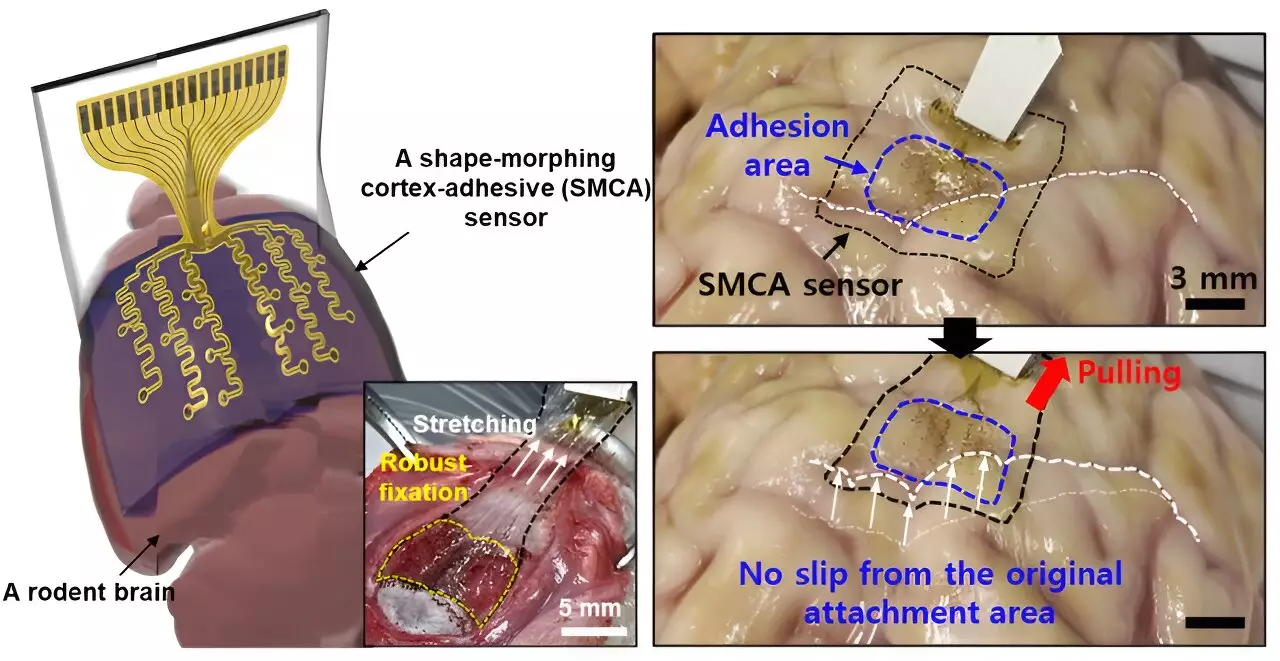Transcranial focused ultrasound (tFUS) stands at the cutting edge of non-invasive therapeutic techniques aimed at addressing a myriad of neurological disorders. This innovative approach harnesses high-frequency sound waves to stimulate precise regions of the brain, making it particularly relevant for conditions like drug-resistant epilepsy and recurring tremors. Collaborations among researchers from esteemed institutions such as Sungkyunkwan University, the Institute for Basic Science, and the Korea Institute of Science and Technology have paved the way for the development of advanced sensors that could potentially enhance the efficacy of tFUS treatments.
A significant barrier in neuroscience research has been the challenge of accurately measuring electrical signals across the brain’s intricate topology. Traditional sensors that interact with the brain surface have encountered limitations, primarily due to their inability to adapt well to the brain’s complex folds and curvatures. According to Donghee Son, the supervising author of the groundbreaking study published in *Nature Electronics,* previous designs struggled with adherence and precise signal recording in tightly curved areas of the brain. This inadequacy has implications for diagnosing brain lesions and analyzing signals from the entire surface.
The innovation that came from Professors John A. Rogers and Dae-Hyeong Kim marked an evolutionary step towards solving these issues, but their sensors still faced significant challenges. Notably, they were prone to slipping due to micro-movements of the brain and the dynamics of cerebrospinal fluid.
Acknowledging the limitations of earlier brain sensors, Son and his collaborators set out to design a new sensor, aimed at ensuring secure adhesion to various brain surfaces. The newly developed sensor, referred to as ECoG, is designed to conform to the highly curved regions of the brain, thus enhancing the reliability of neural signal collection over prolonged periods. The key to this innovation is its ability to reduce external noise originating from mechanical disturbances—an essential factor when considering the precision required for treating conditions like epilepsy.
Son articulates the strength of their design, stating that the ECoG sensor will allow for long-term and accurate measurement of brain signals without the creation of voids between the sensor and brain tissue.
One of the principal focuses of this sensor’s development is its application in low-intensity focused ultrasound (LIFU) treatments for epilepsy. Previous ultrasound technologies often encountered difficulties due to noisy feedback from vibrations caused by ultrasound stimulation—issues that were exacerbated by the external environment and the anatomical dynamics of individual patients. The ECoG sensor minimizes these disturbances, thus facilitating clearer monitoring of brain waves during active treatment.
As researchers push the boundaries on personalized medical treatments, this reduced noise is crucial. Real-time monitoring of brain waves while simultaneously applying ultrasound stimulation is imperative to tailor treatments to individual patient conditions effectively.
The ECoG sensor features a novel design comprising three distinct layers: a hydrogel-based layer that adheres to brain tissue, a shape-adaptive self-healing polymer layer that reshapes to match the brain’s contours, and a stretchable ultrathin layer containing gold electrodes. The hydrogel layer initiates an immediate bond with the brain upon contact, while the self-healing polymer enhances the sensor’s adherence over time, leading to a robust operational capacity.
This advancement not only improves the accuracy of measurements but also allows researchers to effectively stimulate specific areas of the brain without interference from external or patient-specific movements.
While initial tests on awake rodents have yielded promising results—demonstrating the capacity to accurately measure brain activity and control seizures—the potential applications of the ECoG sensor extend far beyond epilepsy treatment. The creators envision a future where this technology can facilitate diagnosis and treatment across various neurological disorders. By increasing the number of electrodes in future iterations, the research team aims to create a high-density array capable of mapping brain signals with unprecedented detail.
The development of the ECoG sensor signifies a monumental leap in the domain of brain research and treatment. By capitalizing on its unique structure and functionality, the potential for personalized medicine in neurology appears more tangible than ever, setting the stage for a future where condition-specific treatments may vastly improve patient outcomes.


Leave a Reply